At Home With the Writer Calum Jacobs
By Adam Coghlan and Michaël ProtinCalum Jacobs is best known for his seminal work on the importance of Black footballers and Black culture in the evolution of modern football: through his magazine, Caricom, and debut book A New Formation: How Black Footballers Shaped the Modern Game, Jacobs has upended stereotypes, spoken for a generation, and written into history the significance of young Black men on a sport which has so often tried to unfairly and selectively recognise their contributions; placing the role of Blackness in football as part of a much wider history of cultural expression.
Jacobs is currently working on his next book, which will move away from football to explore mainstream pop culture and the Black people in it – how they change it and how society reacts to them. “It’s also about a broader concept of Black Englishness and the possibility of it and who represents it and who doesn’t; the factions that exist,” he says. Jacobs has pointedly refused to only speak about racism; and in his book explicitly sought to “eschew the standard frameworks of trauma and oppression that are foisted upon Black narratives … [and to] move beyond discussions of diversity, identity and representation.”
He will soon travel to Southeast Asia to gain some space to think, write, and continue to develop his latest ideas. Before he left Something Curated‘s Adam Coghlan caught up with the author at his home in south London – the place Jacobs does much of his writing but also where enjoys one of his great hobbies, one which he periodically documents through his finsta, “Calumelised”: cooking. It’s why so many of his chosen objects, whose stories he shares below, are taken from the kitchen.
For the last couple of years, the kitchen at this home has taken on extra significance for Jacobs, who has, on his own, been in the process of a slow and careful renovation. In 2021, Jacobs was left with the home, its memories, and of course, his family’s possessions, some of which he recalled from his childhood. It now contains many of his own things, too. Below, in his own words, Jacobs shares the stories behind things he’s found, things he’s bought, and things he’s been given; things he uses all the time, thing he loves. As he says, “If you’re going to use it a lot, it should be nice.”
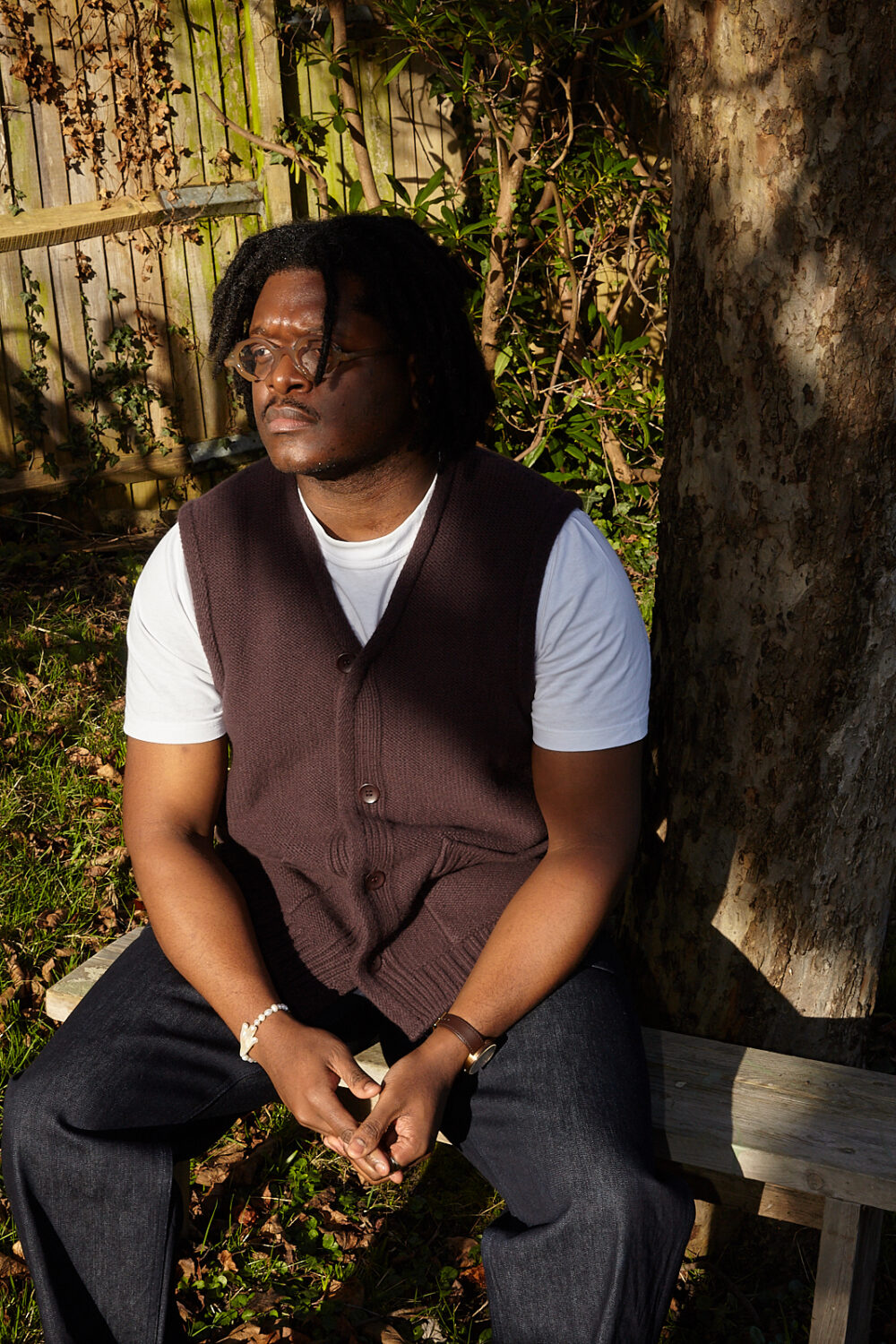
Spoon
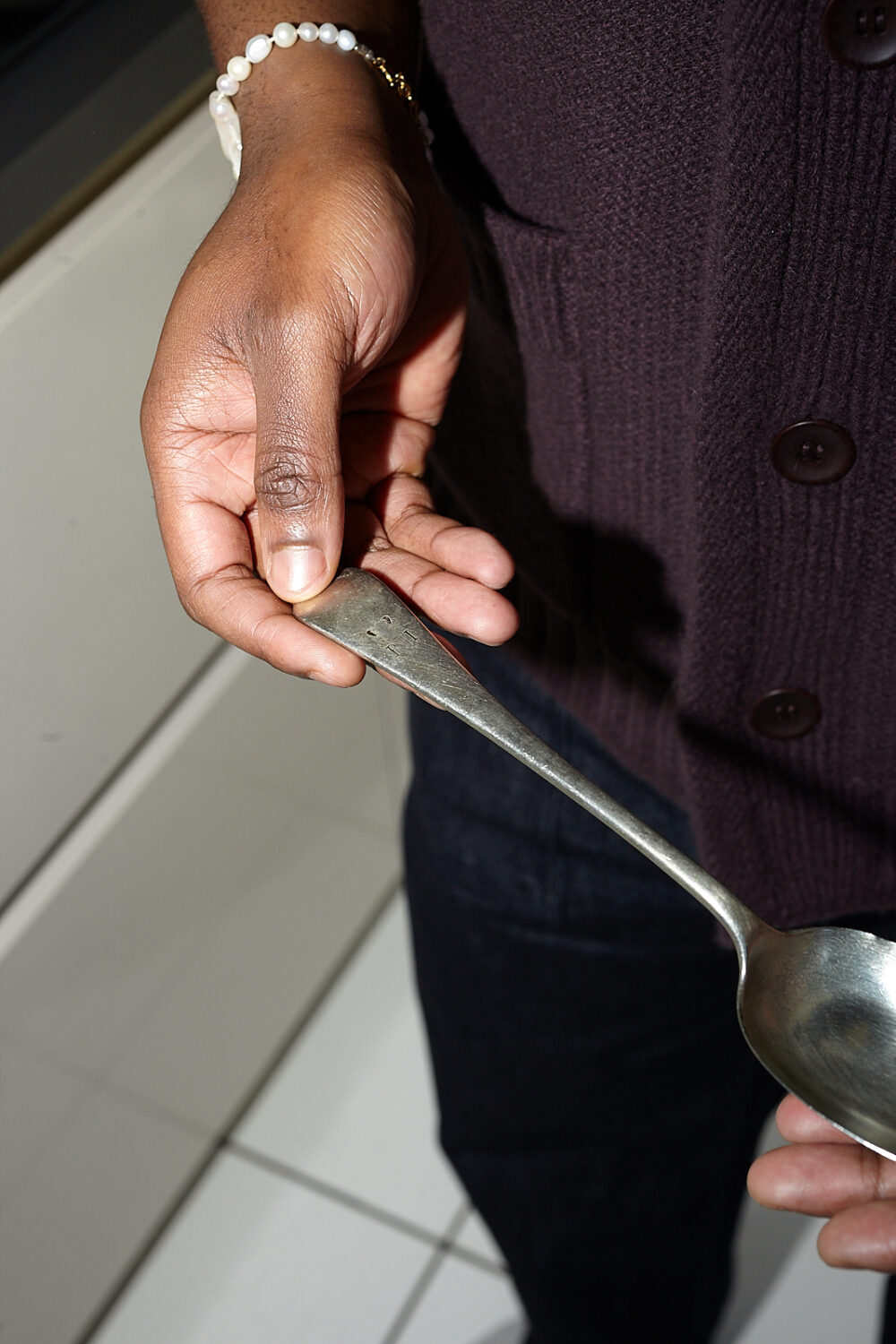
So this is a spoon that has been in my family for ages. It’s always just been in that drawer. For years and years I’ve just always used it. It’s probably the only serving spoon I have so I make sure I polish it up, because it’s a really beautiful object that I enjoy having. It’s got a little dent in the lip which shows the age, which I really enjoy, and it’s got little scratches on the handle. I don’t know the original story behind the spoon, but I think my parents would have bought it when they came to this house, though no one ever explained to me where it came from. It’s just always been there and now it’s mine.
Two little bowls
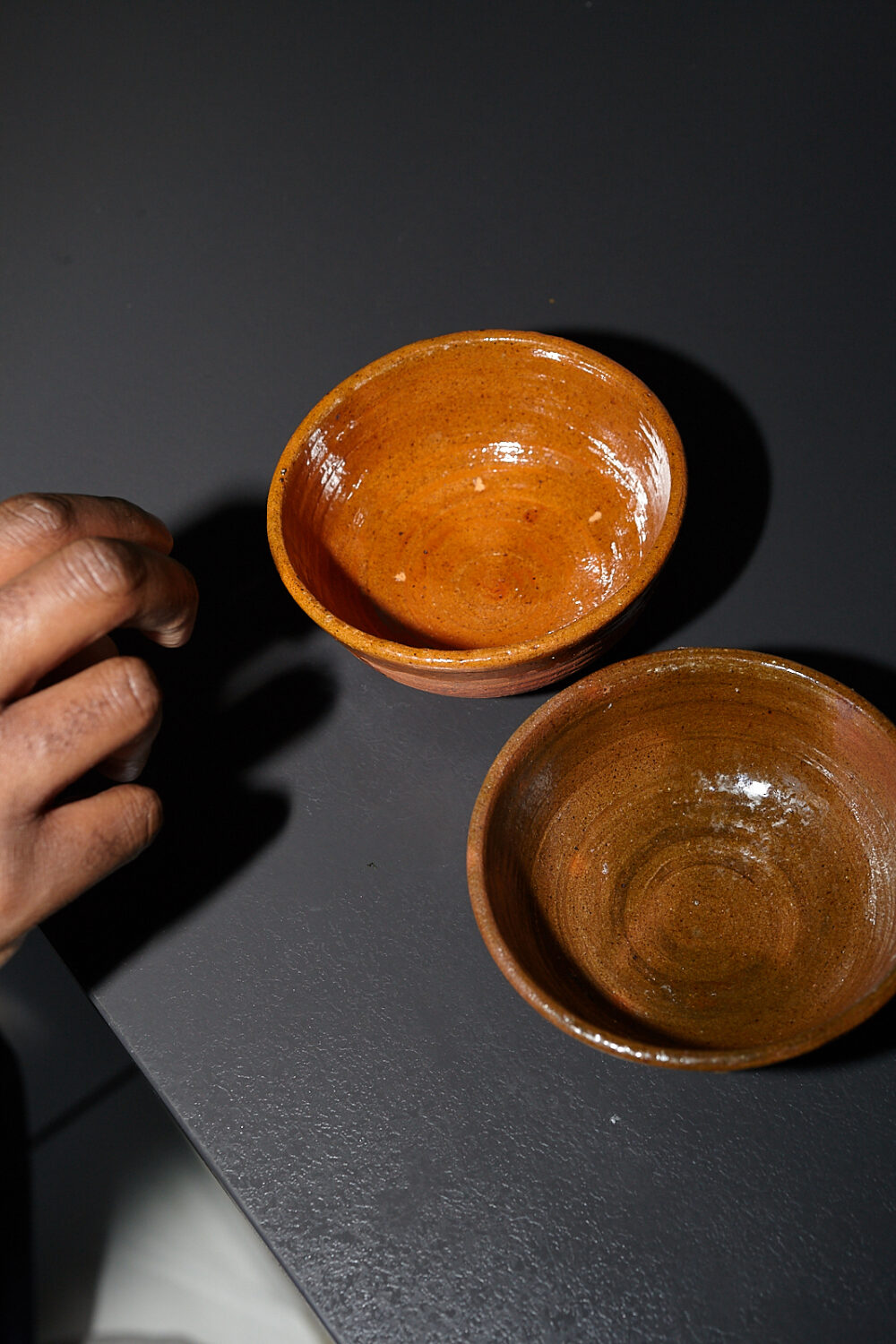
I’m gonna sound like a middle-class tourists but I did a seven day trek in Myanmar a few years ago. And we went from Kalaw, which is out in the middle of the country, and trekked each day north east to this town called Nyaungshwe. And what I noticed around the town was men were kind of doing everything: They ran the restaurants, they drove the cabs, they ran the hotels and hostels and stuff like that. But in the market these women were selling things they’d made. So I was like, ‘yeah, we’re gonna buy some stuff here.’ Because I think this is a way for me to give back to the women in this town, which was just how I was thinking at the time. I’m so glad I bought these two little pots. I remember I didn’t have a big bag so I couldn’t I couldn’t carry a lot with me – I just had like a 50 litre North Face, so I had to be careful.
Now I use them if I’m just measuring a little bit of couscous, or spices or whatever. They’re just really, really attractive little things. And whenever I use them, I remember where I got them from and that trek which was crazy – 45 degrees every day, walking in the baking sun – still, a very meditative, beautiful experience.
Teapot
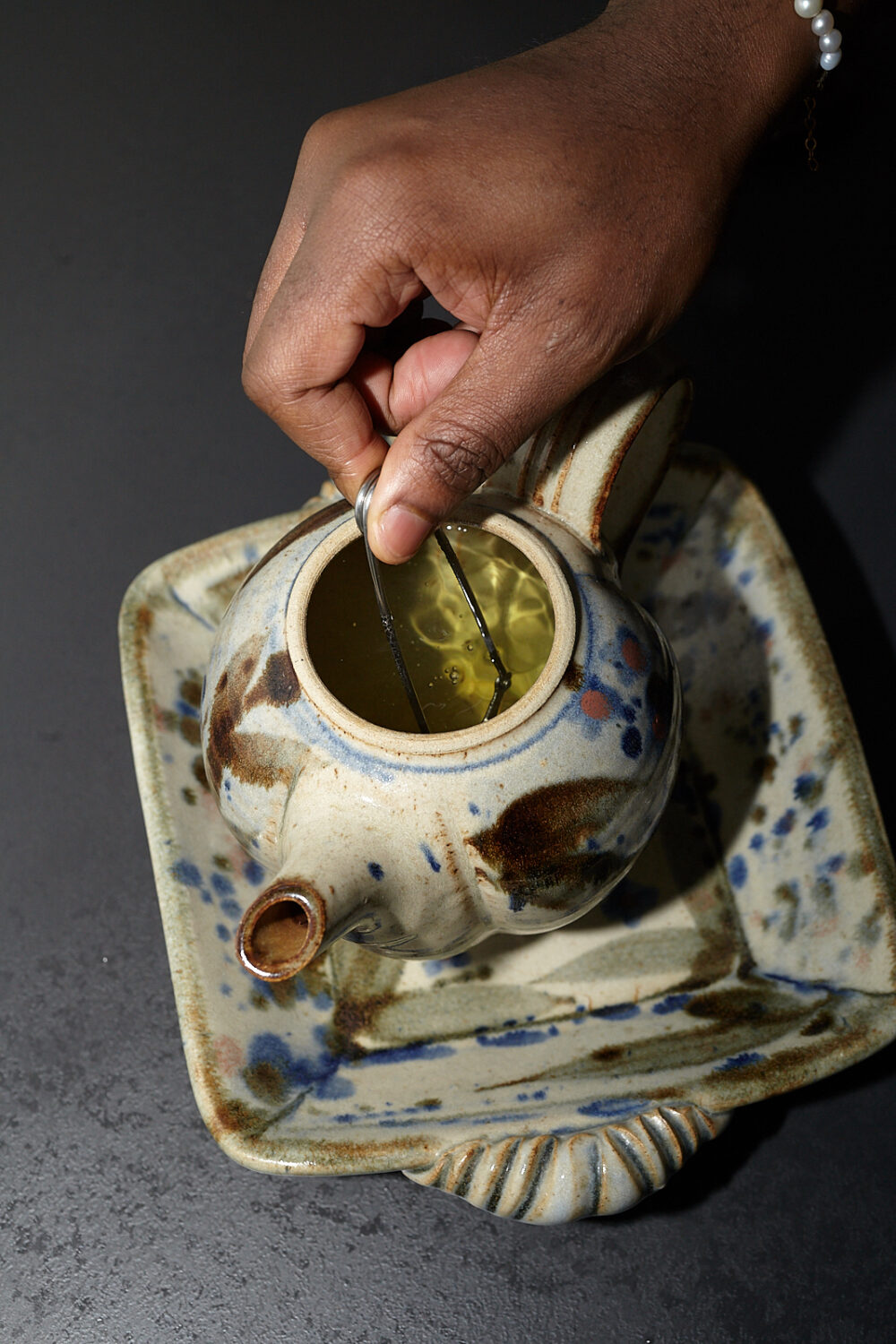
It’s beautiful. I can’t remember if I got it at Portobello Market here or in Portugal, which isn’t useful but it was quite recently – some time late last year. My friend spotted it. It doesn’t have like a master story behind it beyond the fact that because I write and research and so much, tea is the thing that I look forward to when I’m writing. Because I’m gonna be here till midday but at midday I get to go and make a tea and then I’ll bring the pot of tea upstairs and it sits in a little tray. And then I can just enjoy it as I’m writing my thoughts. It’s nice to have things that break up the routine and the monotony of writing and I drink a lot of tea. So it makes sense to have something that I would enjoy making tea in.
Ramekin
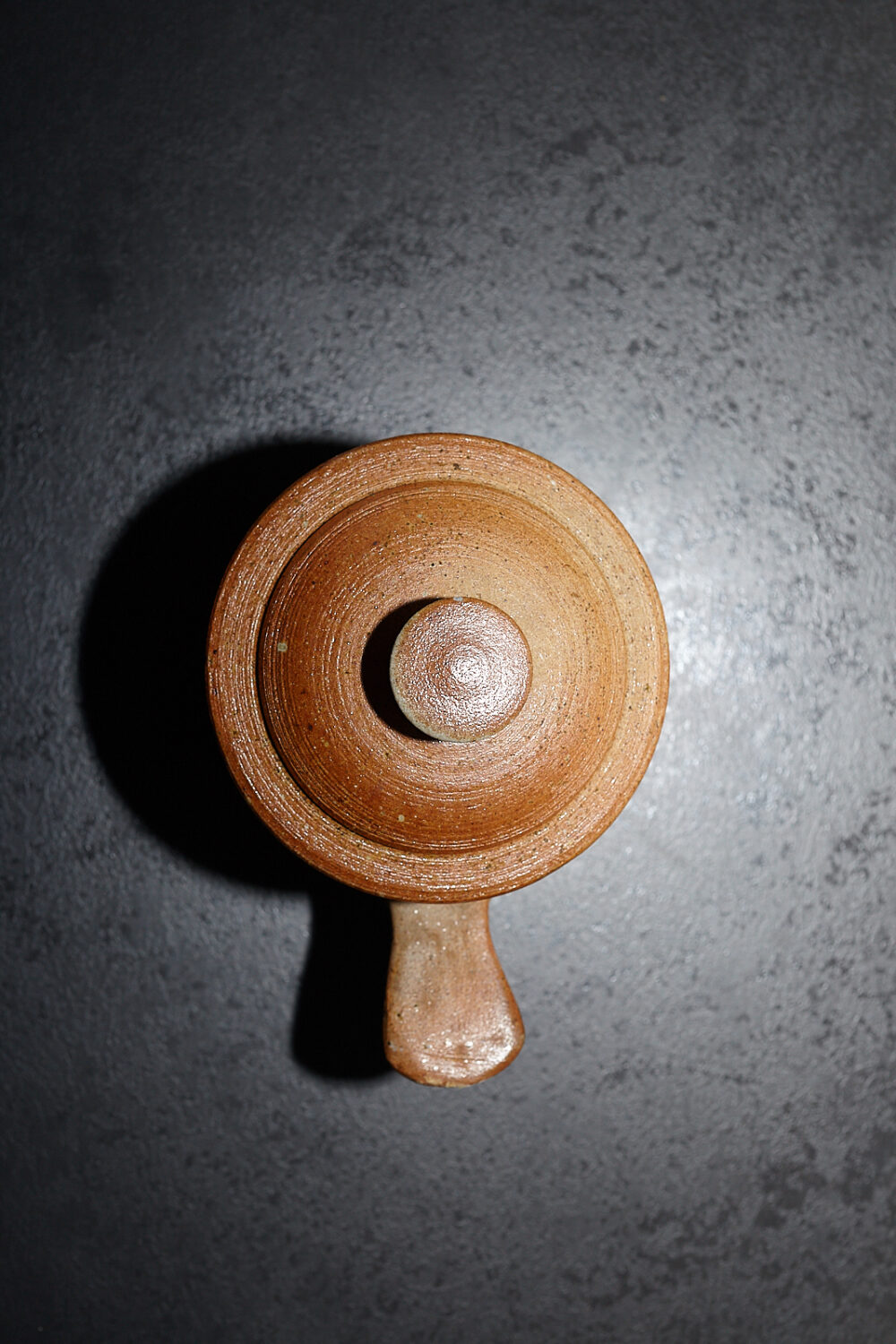
This is from a brand called Winchcombe Pottery that I got from a stall in Spitalfields market: it’s ramekin that I’m using as a salt holder. I saw this little pot and I said, ‘Yeah, that’ll that’ll work with my kitchen, or that my future kitchen.’ It’s a really attractive pot and I feel like it’s nice to have nice things that you use repeatedly. Especially if you’re going to use it a lot, it should be nice. And it fits a whole Maldon salt packet inside!
Glasses
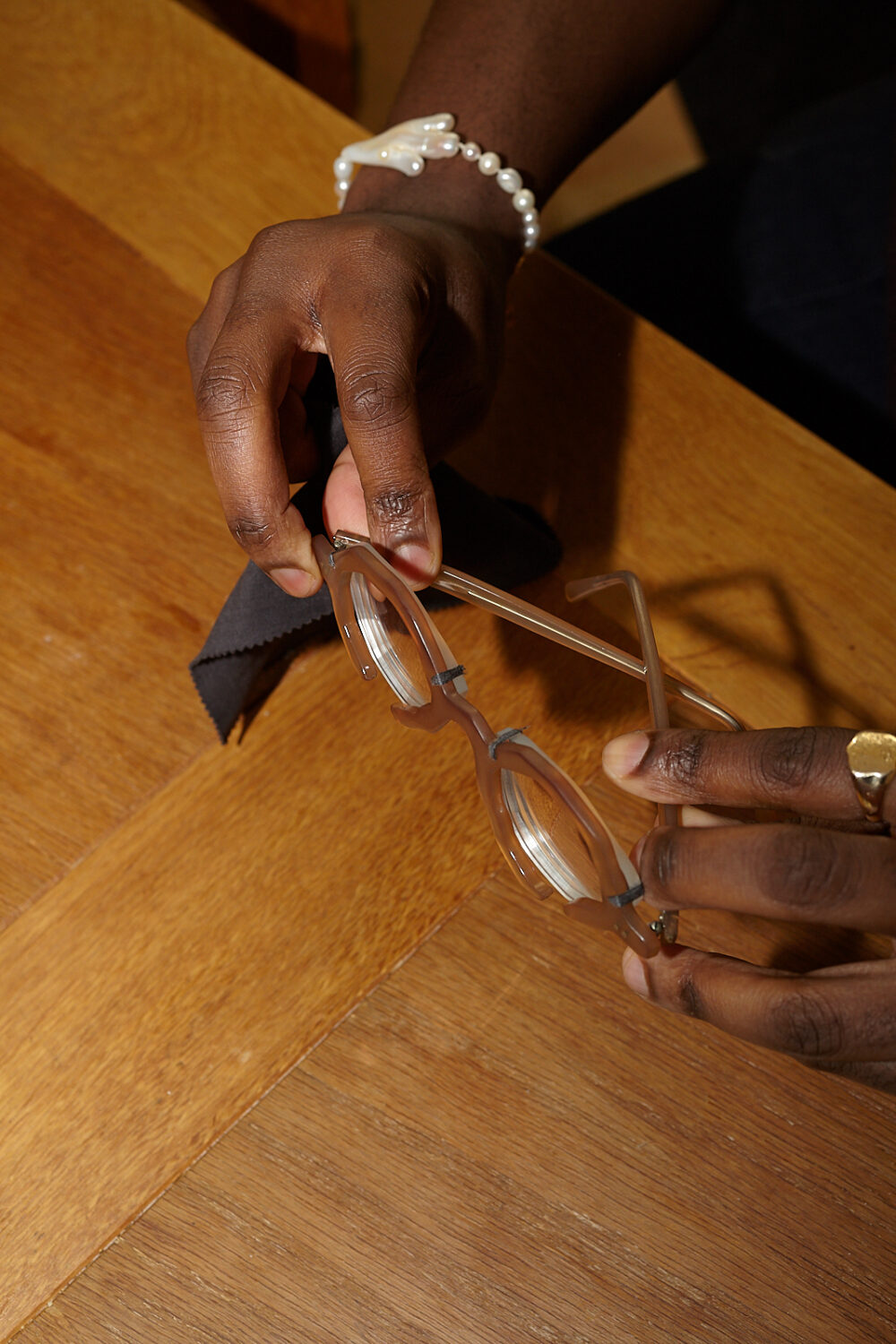
These are the most recent pair of frames that I have from a place in east London called Specstacular Opticians – a place that does custom frames and supplied glasses for the Elton John film and Tinker, Tailor, Soldier, Spy. Keval and Hala who run it have been there, on Cheshire Street, off Brick Lane, since 2016.
The idea, brief for this frame was something that looked like a natural element – tree sap, amber – and you can see they’re asymmetrical and the lenses are held to the frame by twine.
I wanted a pair of glasses that would make me look like an archeologist from the future.
Japanese tool belt
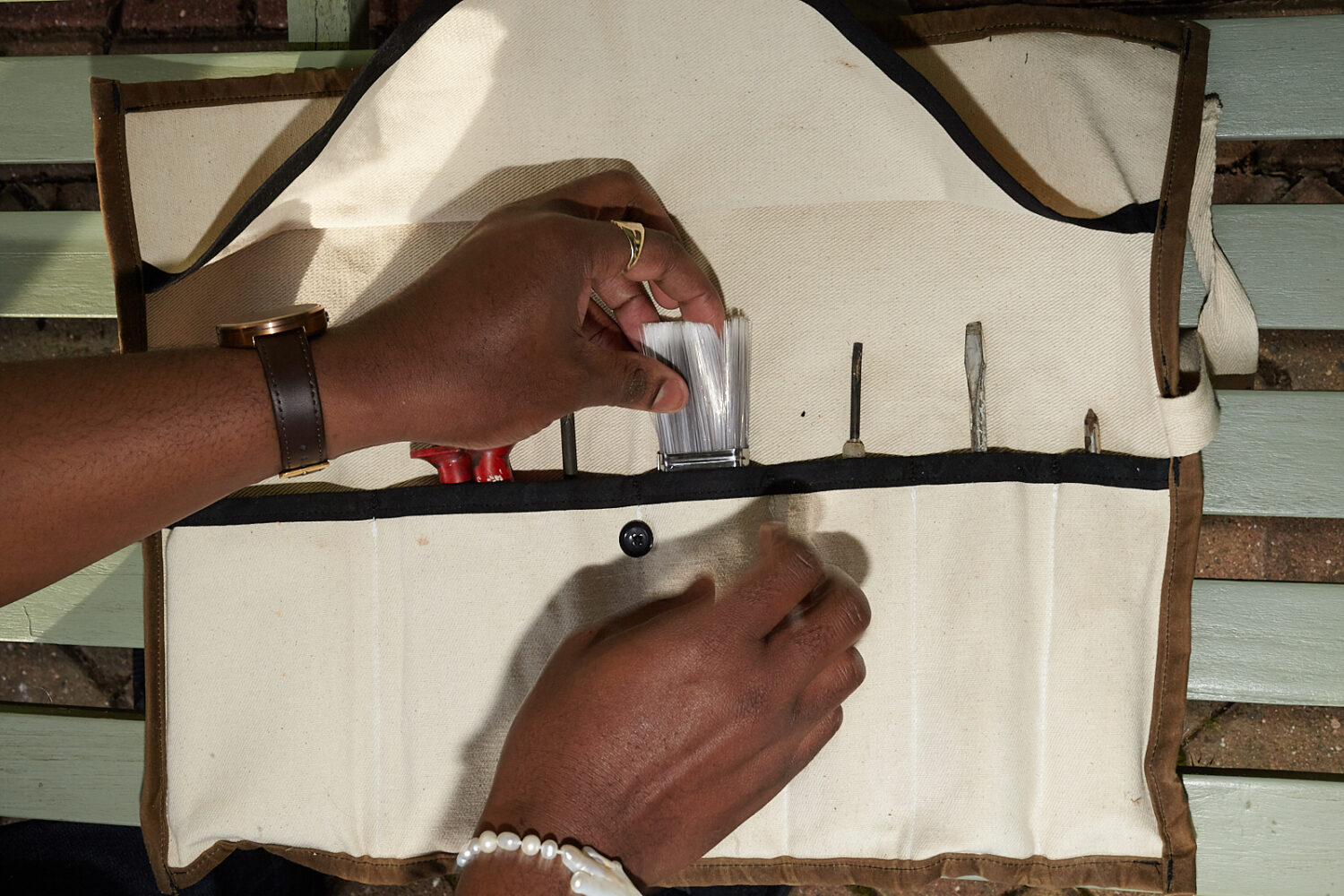
My friend Tom Buckden, who runs this brand called Epoca Blu, made this tool belt. He actually makes shirts, jackets and amazing tote bags – he’s really fucking good. I worked with him at Albam back in the day. And he made this for my birthday, because I’ve been doing up this house … the fabric is water repellent and super hardy. And just it’s just lovely, isn’t it?
I use the tool belt because I’ve got like a little box I keep all my other tools in as well as screws and stuff like that, but in the tool belt I keep all my stuff that I use frequently. And I’ve been doing little bits for this house like changing light fuses, filing down and unhinging cupboard doors and then putting them back on – all kinds of stuff. And this tool belt has been great for all of that stuff. You just need something to hand so you’re not frustrated and trying to search for what you need. Among other stuff, I can just like separate out the things that I use most, and you stick them in here, and it’s just really nice. It’s that thing again: if you have to have a tool belt, why shouldn’t it be handmade by a friend and look as attractive as this?
Bench
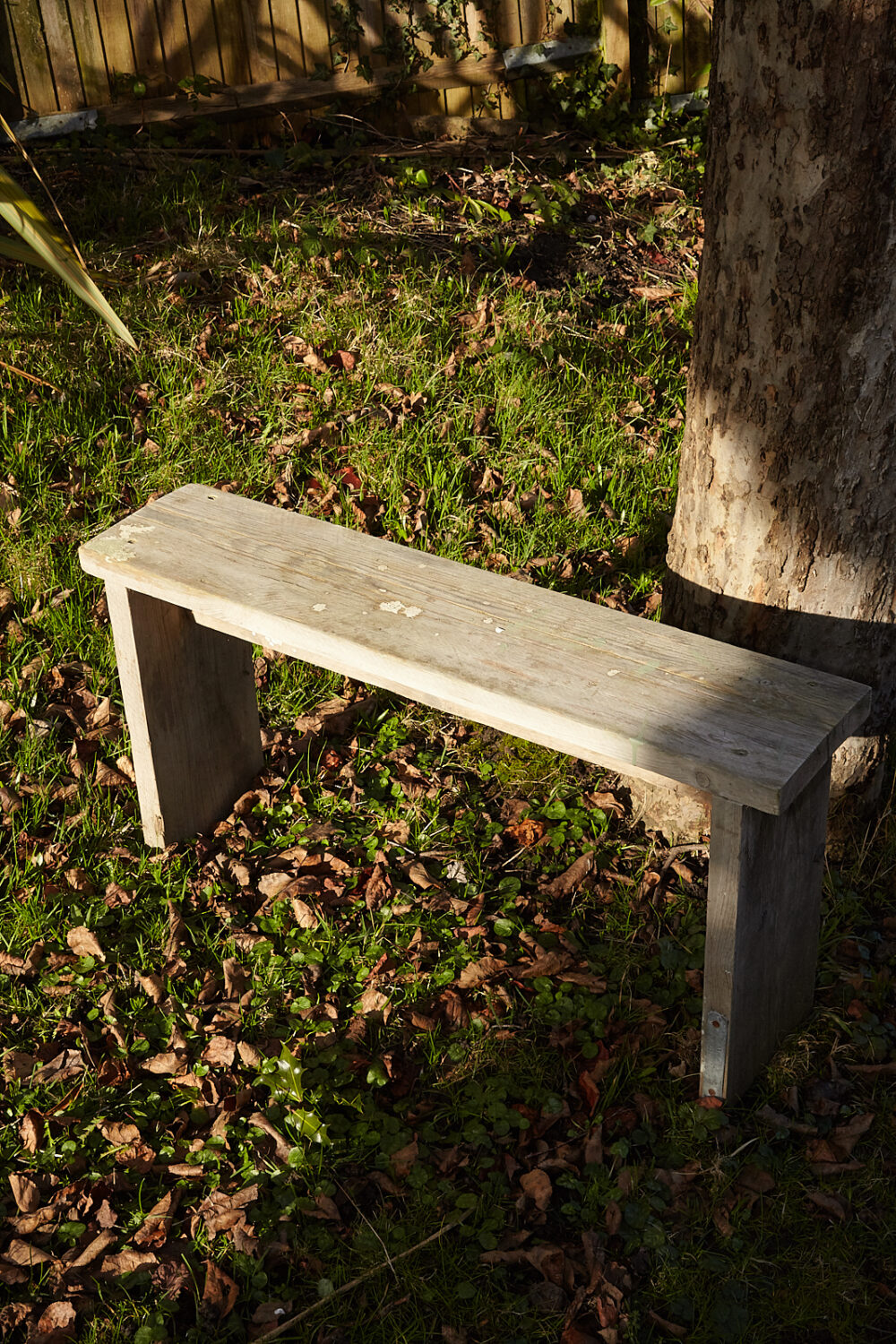
My friend got one of his friends who works with wood to make me this old bench and it’s the one we used in the photo of everyone wearing the Caricom “The Island” Nike kit.
Then I moved it back here with me when I came home. Since I’ve been refurbishing the house, we’ve also refurbishing the garden – so I’ve used this bench to paint the fence, to move vines, install fire alarms, to put up security lights. I’ve used this bench for pretty much everything. It’s been a good solid, steady bench. I deliberately didn’t paint it or make it look more attractive than it is because I wanted it to be a workbench so that I can get paint on it and not care. I feel really attached to it, so much so that I’ve got an actual bench but I sit on this bench instead.
Header image and all photography by Michaël Protin. This interview has been edited for clarity.